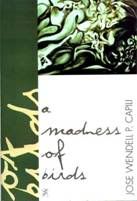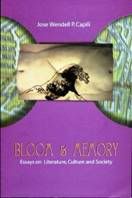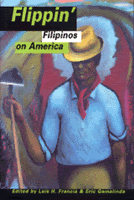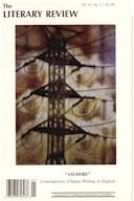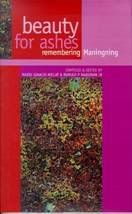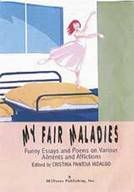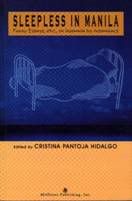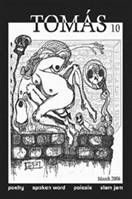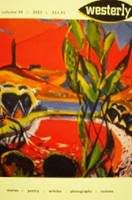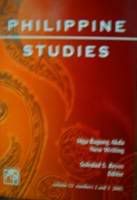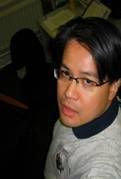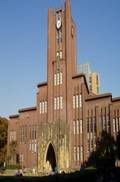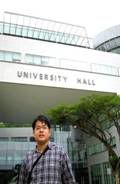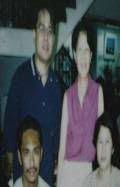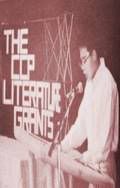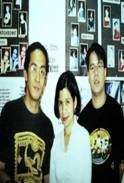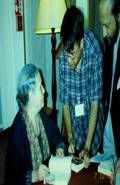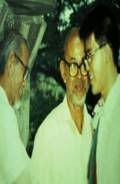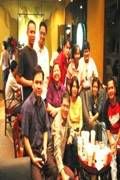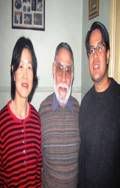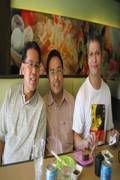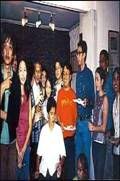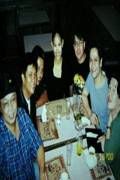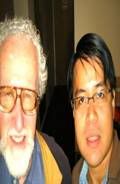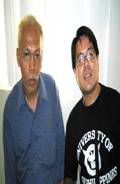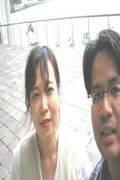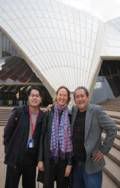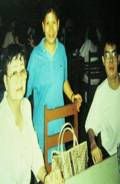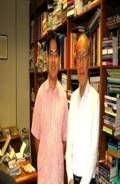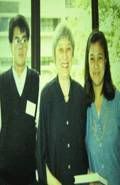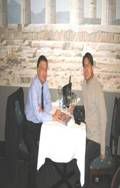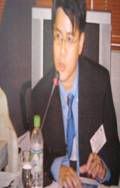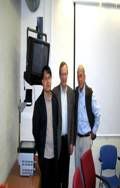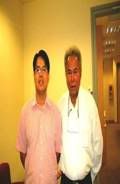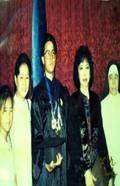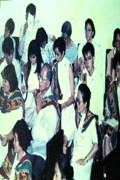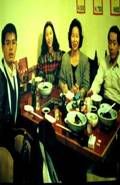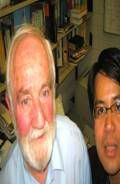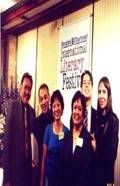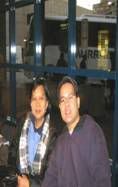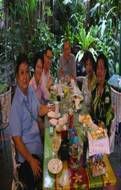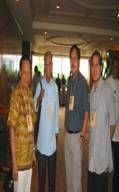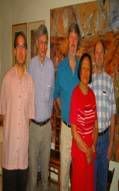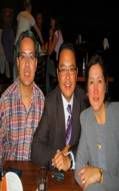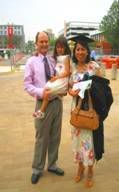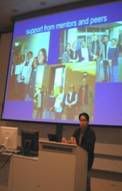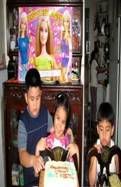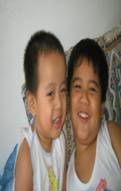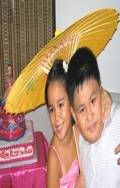Global Prospectus for the Arts in the Philippines: Artists for the Creative Industries
The Philippines is looking closely at creative industries and its impact on economy and development. The mapping of creative industries in the country, among other initiatives for the sector, is currently being undertaken by government to guide policymakers. There is a need to develop a clear understanding of the various initiatives in the sector. Practitioners can benefit from knowing the context of their industry vis-à-vis local and global trends.
Architecture/landscape architecture, and the visual, musical and literary arts have been identified as major contributors to the creative industry, providing content that can be applied to products and services for both local and international consumption. Artists and scholars from these identified sectors have yet to come together to discuss issues, share knowledge and develop recommendations that will help their respective industries to flourish. It is critical to get together and share a common vision for the development of the creative industry, specifically in the identified sectors.
II. Project Description
Global Prospectus for the Arts in the Philippines is designed for creative artists, scholars and other practitioners from architecture/landscape architecture, and the visual, musical and literary arts. Through the conference, it is hoped that practitioners will be able to share experiences, identify key strengths and assess various determinants that will help sustain the creative industries for the many years to come.
Day 1 of the conference aims to provide a global and national perspective of the creative industry sector particularly in the visual, musical and literary arts and its applications. Keynote addresses, to be delivered by national experts and a speaker from the World Intellectual Property Organization (WIPO), will provide the local and global context of the ensuing sessions. Successful models of creative initiatives will also be shared by key personalities in their respective fields including processes to develop products and services from creation of original content to profit generation, provide an overview of practices – what works and what doesn't, and recommend good practice.
Part I of Day 2 of the conference will be a sharing of experiences and key practices from community initiatives led by non-government organizations. The session will discuss community-based practices to develop cultural products and services, and working in the context of a community.
Part II provides an economic perspective to the discussions of the conference. It will be a presentation of the WIPO Study on the economic contribution of copyright-based industries in the Philippines. It will also identify issues and concerns surrounding the visual, literary and media arts that impacts copyright-based industries.
At least two hundred (200) delegates are expected to attend the conference.
III. Project Objectives and Expected Outcomes
The Conference aims to:
1. Gather practitioners in architecture/landscape architecture, the visual, literary and musical arts to share experience – what works and what doesn't – in the context of local and global trends for the creative industry.
2. Identify issues and develop recommendations to grow and sustain the identified industries
Recommendations from the conference will be communicated to relevant organizations as input to government initiatives to develop the sector.
IV. Implementation Arrangements
The Deans of the University of the Philippines' Colleges of Arts and Letters (National Artist and Professor Virgilio Almario), Fine Arts (Professor Tina Colayco), Architecture (Professor Dan Silvestre) and Music (Professor Ramon Acoymo) together with IP Philippines Director General (Atty. Adrian Cristobal Jr.) are the lead convenors of the conference.
V. Participant's Profile
The participants will come from architecture/landscape architecture, the visual, literary and musical arts sectors of the creative industries including key stakeholders from the academe, government, international organizations and the private sector.
Global Prospectus for the Arts in the Philippines: Artists for the Creative Industries
Abelardo Hall (College of Music Building), University of the Philippines
Diliman, Quezon City, Philippines
27-28 November 2008
Conference Fee: P1000 (good or two days, includes free entry to conference lectures, jazz concert, conference bag/kit, access to book and art exhibits)
Contact info:Rhodge Fernandez - seventhgecko@yahoo.com
***
Global Prospectus for the Arts in the Philippines:
Artists for the Creative Industries
Abelardo Hall, University of the Philippines
Diliman, Quezon City, Philippines
27-28 November 2008
WORKING PROGRAM
27 November, Day 1
0900H Registration
0930H Opening Ceremonies
Philippine National Anthem: Prof. Ramon Acoymo, Dean, U.P. College of Music
Opening Remarks: Dr. Sergio S. Cao, Chancellor, University of the Philippines Diliman (UPD)
Message: Atty. Adrian Cristobal Jr., Director-General, Intellectual Property (IP) Office Philippines
1000H Session 1: Global and National Perspective on the Creative Industries and the Arts
Keynote Speakers:
- Overview of the Arts in the Philippines – Mr. Nestor Jardin, President, Cultural Center of the Philippines (CCP)
- Global Perspective – Ms. Donna Ghelfi, Senior Program Officer, Creative Industries Division, World Intellectual Property Organization (WIPO)
Convener: Prof. Ramon Acoymo, Dean, UP College of Music
Moderator: Prof. Gemma Malicdem, College Secretary, UP College of Music
1200H Lunch Break
1330H Session 2: Managing the Arts
The session aims to present successful models of creative initiatives including processes to develop products and services from creation of original content to profit generation and provide an overview of practices – what works and what doesn’t. The panel will be composed of key personalities who have made globally in their respective fields -- Advertising, Music, Furniture Design/Visual Arts and Architecture/Landscape Architecture.
Speaker: Ms. Lisa Gokongwei-Cheng, General Manager, Summit Media
Convener: Prof. Tina Colayco, Dean, UP College of Fine Arts/ Publisher and Founder, Art Post Asia
Moderator: Prof. Ruben de Jesus, Assistant Professor, UP College of Fine Arts
1415H Panel Discussion
- Mr. Marlon Rivera, President and Chief Creative Officer, Publicis Manila
- Mr. Kenneth Cobonpue, furniture design leader
- Arch’t. Catherine Saldaña, Director, Client Services, Resource Partners; AIA, UAP
1500H Break
1515H Session 3: Artists as Entrepreneurs
Local and individual initiatives that have spurred successful businesses will be discussed in the session. It aims to provide a perspective from the artist as creator and as entrepreneur. The panel will be composed of key personalities in Sculpture/Visual Arts, Publishing/Literary Arts, Jewelry Design/Visual Arts and Architecture/Landscape Architecture.
Speaker: Mr. Carlo Orosa, singer, star builder and artist manager
Convener: Prof. and Archt. Danilo Silvestre, Dean, UP College of Architecture /
Founder, DA Silvestre and Associates (DASA)
Moderator: Dr. Gerard Rey Lico, Campus Architect, UP Diliman
1600H Panel Discussion
- Mr. Reggie Yuson, visual artist
- Ms. Gilda Cordero Fernando, writer, publisher, cultural activist and icon
- Mr. Robert Alejandro, visual artist, book designer and television reporter
- Arch’t. Maria Cristina V. Turalba, architect and planner
1645H Summary and Synthesis of Day 1.
1700H Cocktails
1800H Concert featuring the U.P. Jazz Orchestra
28 November, Day 2
0900H Session 4a: Case Studies of Community-Based Industries
Community based initiatives have helped create niche markets for creative services locally and internationally. This session aims to discuss and share the context of creating viable creative initiatives within the context of the community and present case studies as models. Panelists will be led by a community organizer; discussants will be key leaders of community-based organizations who have initiated sustainable creative work.
Speakers: Mr. Lutgardo Labad, Director, Teatro Bol-Anon, and Fr. Valentino Pinlac, Chairperson, Diocesan Cultural Heritage Commission of Tagbilaran City, Bohol
Convener: Prof. Virgilio S. Almario, National Artist for Literature and Dean, UP College of Arts and Letters
Moderator: Prof. Jose Wendell Capili, Associate Dean for Academic Affairs, UP College of Arts and Letters
0945H Break
1000H Panel Discussion
- Mr. Armand Sta. Ana, Artistic Director, Barasoain Kalinangan Theater Group
- Mr. Alfonso "Coke" Bolipata, Executive Director, Miriam College Center for Applied Music
- Arch’t. Edwina Consunji-Laperal, Director and Treasurer, DM Consunji Inc. (DMCI)
1200H Lunch Break
Host: University of the Philippines President Emerlinda R. Roman
1330H Session 5: Managing IP in Creative Industries
The session provides inputs to the sector in terms of managing creative enterprises using collective management of copyright and the trademark system and considering the challenges of a digital environment for creative industries to add value that will benefit the business bottom line.
Speakers:
- Ang Kwee Tiang, Regional Director for Asia and the Pacific, International Confederation of Societies of Authors and Composers
- Atty. Emma C. Francisco, President, Intellectual Property Professors Association
- Atty. Jesus Antonio Z. Ros, Bureau of Trademarks, IP Philippines
Convener: Atty. Louie Calvario, IP Office Philippines
Moderator: Ms. Precious Lejano, IP Office Philippines
1500H Break
1515H Session 6: Development of Policy Statements
1700H Conference Summary and Presentation of Resolutions
1730H Conference Cocktails
1830H World Premiere of Dulaang U.P.’s “Atang”, a musical based on the life of National Artist Atang de la Rama
Venue: Wilfrido Maria Guerrero Theater, Palma Hall, U.P. Diliman
Cast: Ms. Frances Makil-Ignacio, Ms. Shamaine Centenera-Buencamino, Ms. Ayen Munji-Laurel, Ms. Bituin Escalante, Mr. Ricky Ibe, Ms. Jacinta Remulla, Mr. Mitoy Sta. Ana, Mr. Arkel Mendoza and The Dulaang U.P. Ensemble
Script: Mr. Floy Quintos, playwright, scriptwriter and television director
Direction: Prof. Alexander Cortez, Artistic Director, Dulaang U.P.
Labels: creative industries conference


